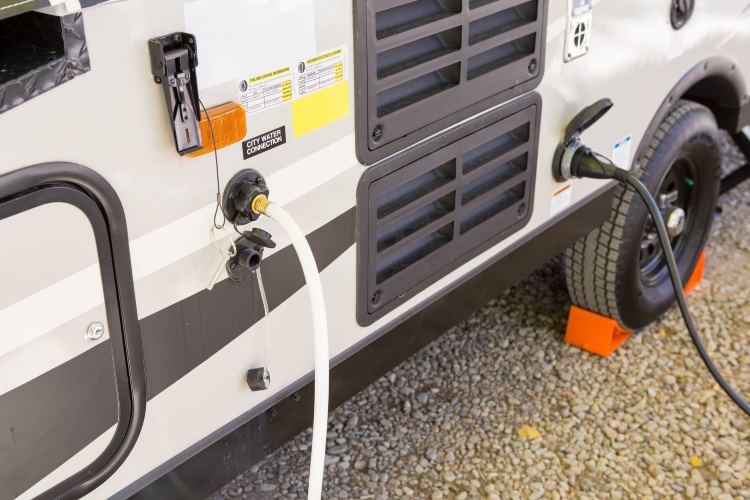Nothing beats taking a shower after a long day of enjoying the Australian wilderness. Baths and kitchen units have been incorporated into motorhomes and RVs for many years now, and none of them would be able to work without a proper water system. In order to take full advantage of your kitchen and bathroom, and enjoy all the commodities you have at home while on the road, you should understand how a caravan water system works, and which parts it includes, so you know how to fix it if anything goes wrong, and what to replace should anything wear down.
Water Tanks
You can find a wide range of camper trailer water tanks. They come in a range of shapes and sizes, and they’re essential for carrying fresh water. Some camper trailer water tanks are fixed, while others are portable. Portable tanks feature rollers that you can use to push and pull the tank away when you need to refill it. On the other hand, fixed water tanks feature a water inlet located somewhere on the campervan. The ideal volume of the water tank will vary based on your specific needs.

Smaller tanks can hold up to 25 litres of water, whereas larger ones can hold up to 200 litres. Some water tanks come with heaters and are better insulated than others, but you can always add a heater and better insulation yourself. The material of the water tank should be of high-quality and it should be suitable for storing drinking water. However, you should also empty, clean and sanitise the water tank regularly, especially if you haven’t use it for some time. If you intend on treating water yourself, use biological and chemical additives exclusively from specialist stores.
Water Pumps
For the water to go through the system, it needs a water pump. The pump uses the piping system to transport the water to a heater and then the withdrawal points around the caravan or motorhome. There are two basic types of water pumps found on most camping sites – submersible and pressure water pumps. Submersible pumps are located in the water tank itself, and when you open a tap, a switch starts the pump and allows water to flow. These pumps are typically used in caravans, whereas pressure water pumps are typically used in motorhomes.
Pressure pumps can be installed anywhere in the system. Plus, they maintain more consistent pressure around the piping. When the tap is opened, the pressure drops and the water pump starts operating. These pumps are typically more powerful, but also more expensive. On the bright side, they last longer and you can easily repair or replace their individual parts. Their largest downside is that if there’s a leak inside the system, the water tank will leak inside the vehicle. You should clean the pre-filter area of pressure pumps.
Regardless of the type of pump you decide to go for, make sure it can pump at least 12 litres of water per minute. Submersible pumps shouldn’t be dry for long, as they can break down.

Pipes and Hoses
The water pipes and hoses of your water system need to be approved for drinking water. Typically, hot water hoses are red, whereas cold ones are blue. Pipes are typically installed in accessible places so you can repair potential leaks. Dirty water will go out of a corrugated hose that’s connected to the wastewater tank.
Water Heaters
In most cases, water heaters come with the water system, however, you can choose between a few variations if your system doesn’t include one. There are boilers, thermes, and combo appliances. Boilers are capable of holding more water than thermes, so if you’re going on lengthy trips you’ll need one with at least 10L of capacity. Most boilers run on electricity, but some also run on gas or a mixture of both.
Thermes, on the other hand, use the warmth from the caravan heater to heat the water. This method saves more energy and you can rest assured you’ll always have warm water available when you turn on the caravan heater. If the heater isn’t used, you can still warm up water with an electric heating element. These water heaters generally hold 5-10L of water and are better suited only if you plan on using warm water to wash dishes or your hands.
Combi appliances heat up your caravan, as well as the water. They feature an integrated water container, and you can use both heating features together or separately. This saves you weight and space in the caravan.
No matter the type of heater you get, you should make sure it’s empty come winter. Some models come with a drain valve that lets you empty the tank automatically if there’s a risk of temperatures dropping.

